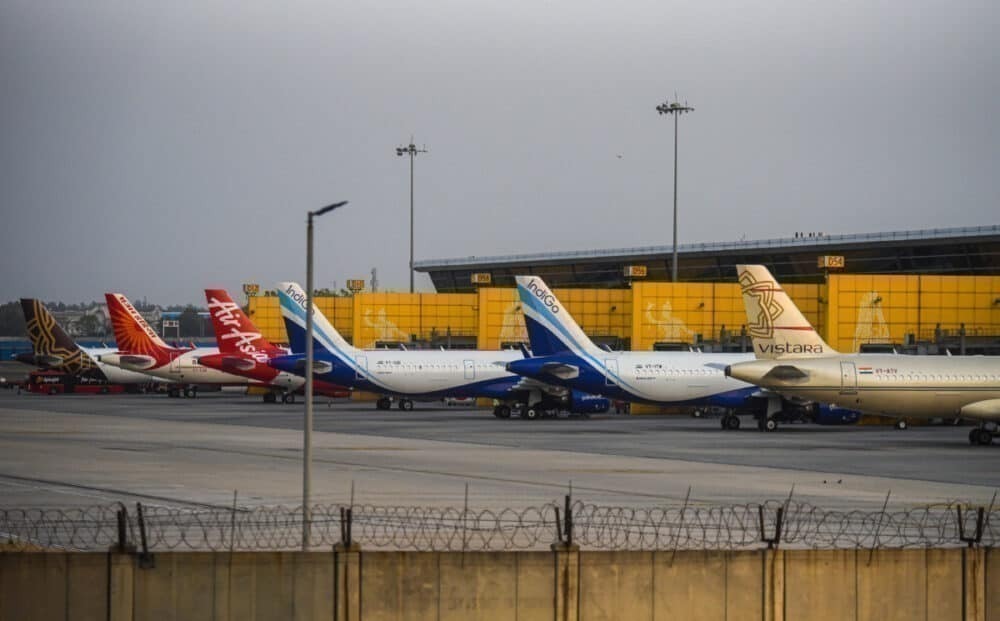Following a recent incident, India’s aviation regulator, the DGCA, has warned of harsh penalties for inflight photography. The regulator has said that airlines that fail to stop passengers from taking photographs could be subjected to a two-week ban on the route. While the law against inflight photography has been on the books for years, it has hardly been enforced. That may change starting now.

Ban on photography
India has had a ban on inflight photography under the Aircraft Rules act of 1937. The DGCA is now looking to enforce this law, placing strict penalties on airlines who do not follow it. Under the rules, the following is not allowed:
No person shall take, or cause or permit to be taken, at a Government aerodrome or from an aircraft in flight, any photograph except in accordance with and subject to the terms and conditions of a permission in writing granted by the Director-General, a Deputy Director-General, the Director of Regulations and Information or a Controller of Aerodromes of the Civil Aviation Department.




This effectively means that no one is allowed to take pictures from a flight or airport without the express permission of DGCA officials. While these rules have been on the books for decades, airlines and regulators rarely ever enforced them. Airlines themselves use inflight photos for promotional posts.
Strict enforcement
In a circular last night, the DGCA reminded everyone of the limitations on inflight photography stated above. The regulator also warned that airlines have not been enforcing these rules because of “a lack of diligence on their part.” Not enforcing the law poses a safety risk according to the DGCA, and must be done by airlines.
To ensure compliance, the DGCA has said that if any violation that occurs on a scheduled flight (i.e., someone takes a photo from the plane), the airline can face a two-week ban on that route, which could be extended until the airline takes “all the punitive action necessary” against the violators.




This effectively means that airlines are on the hook for passenger photography. Flight attendants will likely be a lot more vigilant about who is taking photos or recording and checking if that is a violation of the broad rules.
Punitive action by airlines could also include putting passengers on a no-fly list if they do not follow crew instructions. Airlines have a lot at risk a now since a two-week ban can cost millions in lost revenue, and we can expect swift enforcement of the new DGCA guidelines. IndiGo has been asked to take action following a recent violation on one of it’s flights.
Why now?
You might be wondering why is the DGCA tightening the rules on an 83-year-old law now. This has to do with an incident onboard an IndiGo flight from Chandigarh to Mumbai last Wednesday. On the plane, several press members took the flight to interview actress Kangana Ranaut while on the plane.
The press members reportedly violated COVID-19 guidelines and did not listen to crew instructions, trying to question the actress at various points in the flight. They were also not wearing their masks at times and repeatedly crowded the aisle, strict no-no’s from a safety standpoint.
After Kangana Ranaut Flight Chaos, Regulator’s Tough Warning For Airline https://t.co/BuJh0VoGSK pic.twitter.com/ZtFXtUNkIy
— NDTV (@ndtv) September 12, 2020
This unruly behavior, and recording passengers without their consent and the DGCA’s, has prompted a backlash. Following this incident, the DGCA issued the new guidelines, which ban inflight photography altogether. The hefty penalties mean that airlines will be sure to stop anyone from taking photos or recording on a flight.
However, these guidelines do not impact only the press but also anyone who just wishes to take a photograph for personal consumption. We could be seeing the end of flight reviews and other inflight promotion, depending on airline enforcement. This would be a drastic measure and could change the flying experience.
What do you think of the new ban? Is it justified? Let us know in the comments below.



